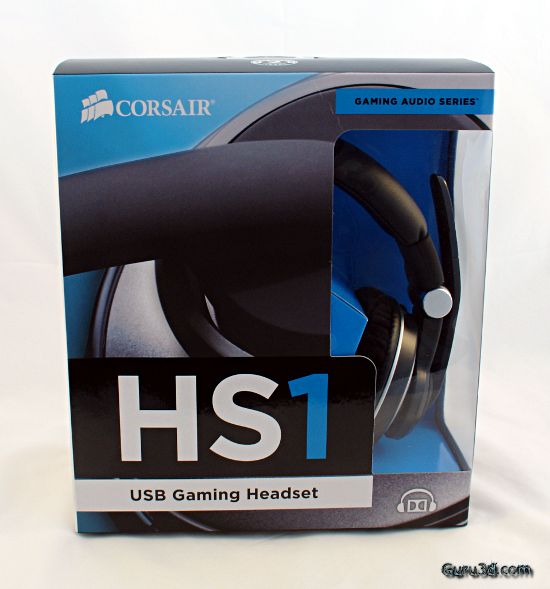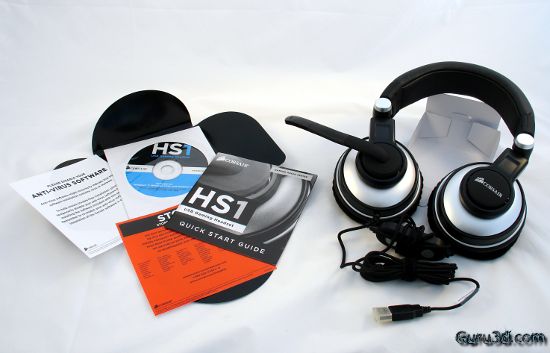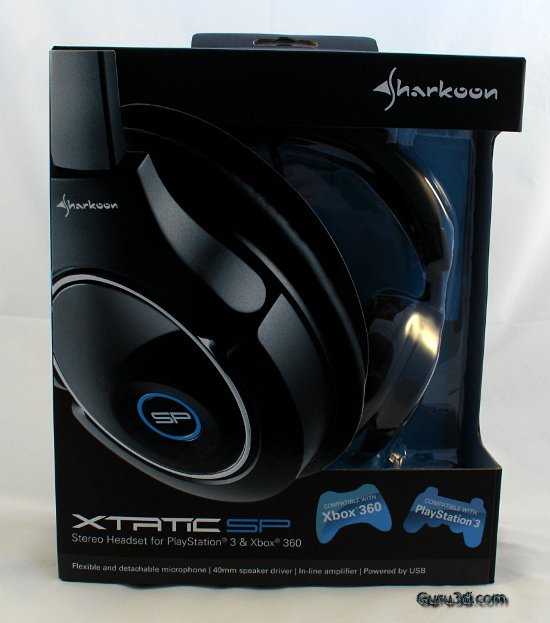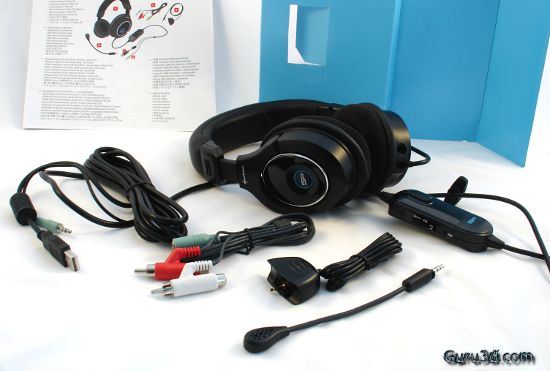Features and Benefits
Features and Benefits
By virtue of being first alphabetically, the Corsair will come first. And don't be alarmed, the HS1 are a fairly standard pair of headphones, all things considered. Lets take a look at the technical specifics.

Corsair is aiming the HS1 at gamers, of course.
Headphones:
- Frequency response: 20Hz 20KHz
- Impedance: 32 Ohms at 1KHz
- Dynamic range: 95dB A-weighted
- USB power consumption: 250mW
- Cable: 3 meters (and nicely corded)
- Connector: USB Type A
Microphone:
- Type: Unidirectional noise-cancelling condenser
- Impedance: 2.2K Ohms
- Frequency response: 200Hz 10KHz +/- 3dB
- Sensitivity (1mW, 1KHz): -45dB +4/-2dB
Not a lot of fluff here, which is very good. Its not good on cats, nor is it good on headsets. Headset reviews, Im undecided.
Corsair has been cranking out some very impressive hardware, the Obsidian cases for example, and I dont expect anything less that great from them with the HS1. What isn't shown in the specs are the software capabilities of the HS1, Dolby Headphone and Xear3D.
Somewhat curious is the inclusion of dynamic range. Since these USB headsets are a kind of sound card (they do have a DAC in there), this might indicate the level of quality. Comparing the HS1 to a discreet sound card, 95dB is not bad at all, but still pretty far off from the likes of a modest Creative X-FI (106dB or so).

The HS1 have a few other interesting features besides the hardware specs that well go over in the next few pages, including big, plush earpads, big soft headband, and a cloth-wrapped cable. And it might be a put-off to some, but it also requires a software install to work, but we tend to think with the HS1, it's a good thing.
Moving on to the Sharkoon Xtatic SP, we see a similar trend in very advanced anti-fluff technology:

Headphones:
- Frequency response: 20Hz 20KHz
- Impedance: 40 Ohms
- Sensitivity: 118 +/- 3dB
- Cable: 3.7 meters
Microphone:
- Directivity: omni-directional
- Sensitivity: -58 dB +/- 3 dB
- Impedance: 2.2 kΩ
- Frequency response: 100 Hz 2 kHz
The HS1 and Xtatic SP have fairly typical specs for headsets. Although I find it somewhat strange to see specifications like impedance listed for both headsets, because of the USB nature of these headsets, impedance doesnt matter. Basically the most important specification listed here, then, in my opinion, is the cable length. Having a long cable is very important because nobody wants to feel too tied to the TV or monitor. Amiright, people?

The rest of the specs are somewhat junk specifications. Nobody in the headphone/headset business ever publishes a frequency response that is somewhat accurate or even flat. This is because how the ear works, of course, the ear isnt as sensitive to bass and treble as it is right in the middle. This results in frequency response graphs that look bad, big bass and crazy treble, but will sound great when you put them on your head.
The microphones for these headsets are somewhat a bigger deal. You generally want noise-cancelling and good sensitivity in your microphones to keep distortion low. The Corsair wins this one easily by having good sensitivity and a good frequency response. Of course, for microphones you really do want a flat frequency response. The Sharkoon, while the specs seem a little underwhelming, it gets the job done.
While Im on the subject, the Sharkoon Xstatic SP has been designed for PlayStation 3, Xbox 360, or PC, and as a headset aimed at consoles, it has a lot more flexibility than the HS1. The HS1 is decidedly PC-only, because it requires a driver install to be fully functional (they do work on Macs, but youll have to live with blinking LEDs).
With Sharkoon Xstatic SP, you also get the big, plush earpads, comfortable squishy headband, but the overall fit-n-finish is just a notch down from the HS1. The SP does throw in a variety of cables for connecting to consoles, however, and it also does not require drivers to work. Win!
Thats it for the overview; lets press on to the more detailed photography section. Next page, please.
